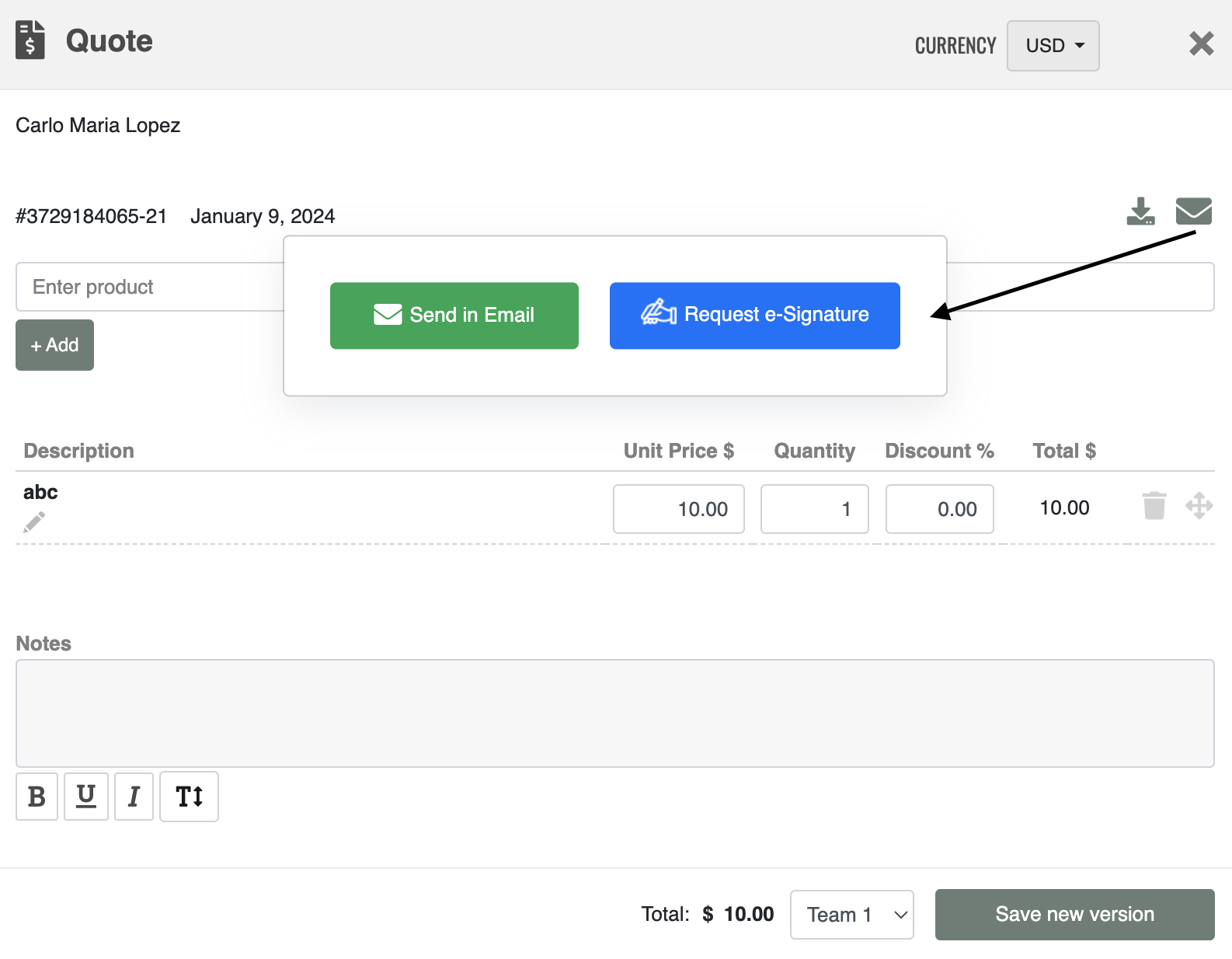E-signatures are digital representations of handwritten signatures or other forms of agreement. They are used to authenticate and validate documents online.
These digital signatures leverage cryptographic techniques to ensure the integrity and security of the signed content, making them legally binding and equivalent to their paper counterparts.
Conventional methods
Grappling with the conventional sales process brings a cascade of challenges. They are intricately woven into each manual step and the generation of paperwork creates a lot of tasks.
- Geographical divide: Traditionally, stakeholders must meet in person or exchange physical documents. This introduces delays and hurdles when stakeholders are geographically dispersed.
- Scanning: After signing, scanning documents for digital records adds extra manual work. This further slows down the whole process. Approval and document routing become prolonged, with iterative review processes impeding real-time negotiations. This emphasizes the sluggish nature of the traditional approach.
Quotes with e-Signatures
As a response, e-signatures emerge, offering agility, security, and efficiency. E-signatures in Quotes eliminate the need for physical paperwork. They provide a streamlined digital alternative for drafting contracts and proposals.
1. No Geographical Barriers
E-signatures transcend geographical limitations, allowing stakeholders to sign documents remotely, eradicating delays associated with in-person sessions.
2. Digital Record-Keeping
E-signatures replace the cumbersome process of scanning physical documents. They enhance efficiency and reduce manual effort with seamless digital record-keeping.
3. Accelerating Approval Processes
E-signatures expedite approval cycles and document routing, minimizing bottlenecks and facilitating smoother workflows.
4. Enhanced Security
E-signatures ensure the security of digital documents, mitigating risks associated with paper vulnerabilities.
Moreover, the elimination of physical paperwork reduces costs and environmental impact, marking a shift towards sustainable practices.
How e-Signatures Work
Electronic signatures, commonly known as e-signatures, are digital equivalents of handwritten signatures in the realm of electronic transactions.
They serve as a secure and legally recognized method to indicate consent, approval, or acceptance of digital documents or agreements.
E-signatures have gained widespread acceptance across various industries. They are a convenient, efficient, and legally binding alternative to traditional pen-and-paper signatures.
Digital Authentication
E-signatures utilize various digital authentication methods to verify the identity of the signer. This often involves multi-factor authentication, such as passwords, biometrics, or unique codes sent to the signer’s registered device.
Cryptographic Hashing
To ensure the integrity of the signed document, e-signatures employ cryptographic hashing algorithms. These algorithms generate a unique digital fingerprint or hash value for the document. This makes alterations detectable.
Consent and Intent
Before applying an e-signature, the signer typically goes through a process that demonstrates their consent and intent to sign the document. This may involve clicking an “I Agree” button or explicitly selecting an option to sign.
Audit Trails
E-signature platforms often include audit trail features that record the entire signing process. This includes the time of signing, the IP address of the signer, and any actions taken during the signing process. Audit trails enhance the legal validity of e-signed documents.
Compliance with Regulations
E-signatures adhere to various national and international regulations. For example, the U.S. Electronic Signatures in Global and National Commerce (ESIGN) Act and the European Union’s eIDAS Regulation. Compliance ensures that e-signed documents are legally valid and enforceable.
Secure Storage
Once a document is e-signed, it is securely stored in a digital format. The platform offer cloud-based storage, ensuring accessibility and preventing the loss or damage associated with physical documents.
Accessibility
E-signature solutions are user-friendly. They offer intuitive interfaces that guide signers through the process. This accessibility contributes to the widespread adoption of e-signatures across various user demographics. iness.
Signing and Scanning
The process introduces significant delays as the document travels back and forth between parties. Each step adds precious hours or days to the process. For example, sending the document and obtaining physical signatures.
After obtaining signatures, the document needs to be scanned. This introduces an additional, time-consuming, and error-prone step.
Also, the manual handling of physical documents increases the likelihood of errors, from signing discrepancies to misplacements during scanning.
Common Concerns
As businesses transition to digital solutions, concerns and objections related to the adoption of e-signatures may arise. Addressing these apprehensions is crucial for fostering confidence in the reliability and security of electronic signatures.
Here are common concerns and effective responses:
1. Security Concerns:
Concern: Users may worry about the security of their digital signatures and the potential for unauthorized access.
Response: E-signature platforms employ robust security measures, including encryption, secure authentication, and audit trails. These features ensure the integrity of the signed documents and protect against unauthorized alterations. Additionally, compliance with industry standards and regulations reinforces the security of e-signatures.
2. Legal Validity
Concern: Skepticism may arise regarding the legal standing of e-signatures.
Response: E-signatures are legally recognized in many jurisdictions, backed by regulations like the U.S. ESIGN Act and the European Union’s eIDAS Regulation. E-signature platforms adhere to these standards, ensuring the legality and enforceability of electronically signed documents. Legal precedents and evolving legislation further support the acceptance of e-signatures in various legal contexts.
3. User Authentication:
Concern: Doubts may be raised about the authenticity of signatories and the potential for identity theft.
Response: E-signature platforms employ user authentication methods to verify the identity of signatories. These measures enhance the overall integrity of the signing process and mitigate the risk of unauthorized access or impersonation.
5. Accessibility and User Adoption
Concern: Employees or clients may resist adopting new technology due to concerns about complexity or unfamiliarity.
Response: E-signature platforms prioritize user-friendly interfaces and intuitive design. Extensive training is usually not required, and many solutions offer guided processes to ensure a smooth user experience.
E-Signatures in Onpipeline
Onpipeline is a CRM platform that goes beyond the conventional by offering in-built e-signature capabilities. This eliminates the need for external applications and transforms the order acquisition process into a seamless, all-in-one experience directly within the CRM platform.

Unified Workflow
Onpipeline’s integrated e-signature feature allows sales teams to seamlessly manage the entire sales cycle—from generating quotes and proposals to obtaining electronic signatures on order forms—all within the familiar confines of the CRM platform.
Eliminating External Dependencies
Unlike platforms relying on third-party e-signature apps, Onpipeline’s approach simplifies the workflow by providing a comprehensive solution without the need for additional tools. This not only enhances efficiency but also reduces the potential for integration issues.
Accelerated Processing
With the ability to create, send, and sign documents all within Onpipeline, the order acquisition process experiences a significant boost in sales velocity. Sales representatives can navigate the entire workflow without switching between different applications.
Cost-Effectiveness
The all-in-one functionality of Onpipeline not only enhances efficiency but also contributes to cost savings. The elimination of external e-signature tools reduces licensing and subscription costs associated with third-party applications.
In essence, the integration of e-signature capabilities directly into Onpipeline’s CRM platform transforms the order acquisition process, providing a unified and efficient solution. This approach exemplifies Onpipeline’s commitment to offering a comprehensive CRM experience without relying on external applications.




